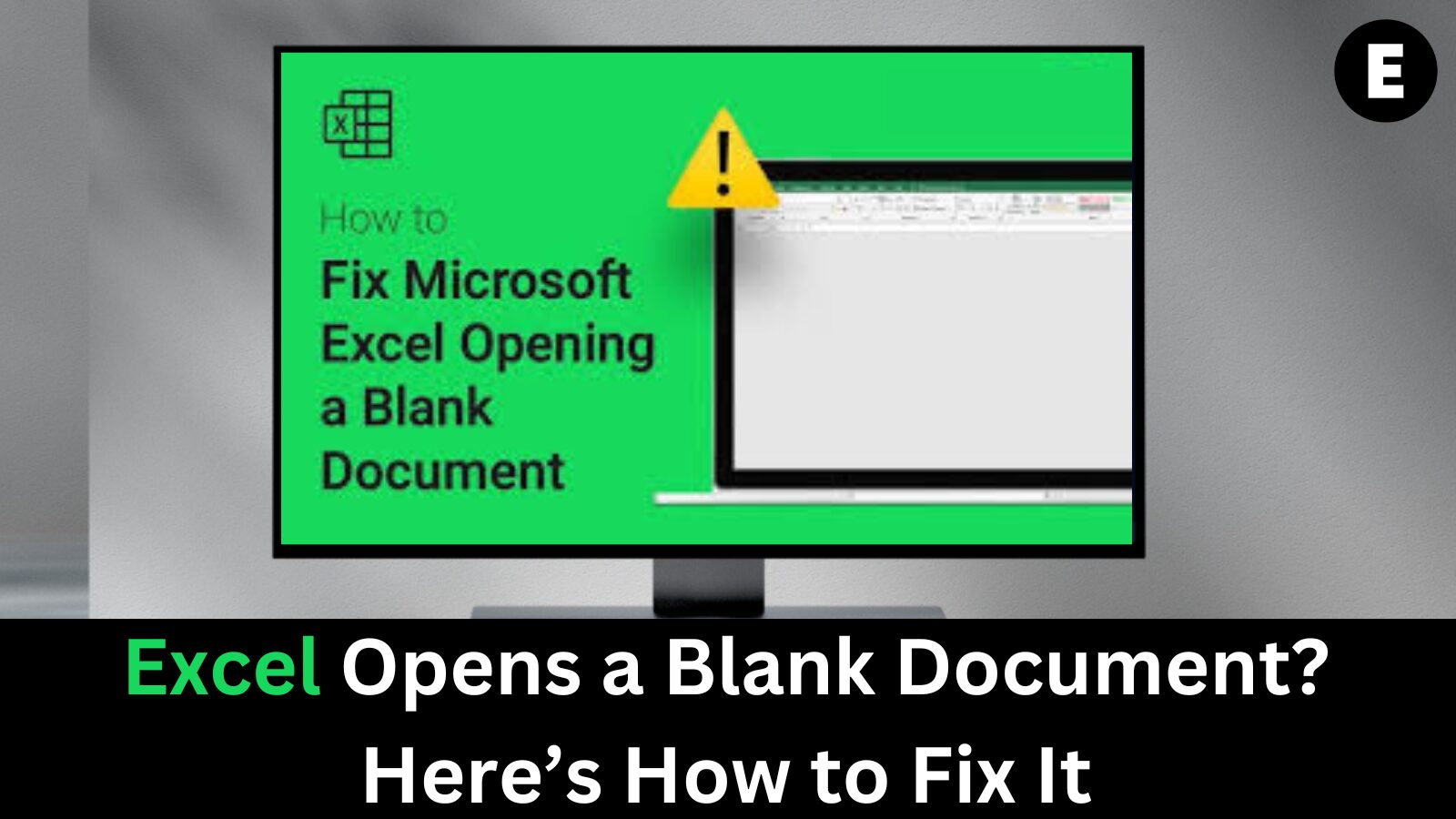Microsoft Excel is a powerful and versatile tool trusted by professionals, students, and businesses worldwide for everything from data analysis to complex calculations. However, a common and frustrating issue some users encounter is when Excel opens a blank workbook instead of displaying the file’s contents. This problem can disrupt productivity and cause unnecessary stress—especially when you’re working on tight deadlines.
Fortunately, this issue is typically easy to resolve. With the right troubleshooting steps, you can quickly restore Excel’s functionality and regain access to your important spreadsheets. Whether you’re dealing with blank Excel files when double-clicking or files not displaying data properly, we’ve got you covered.
In this guide, we’ll walk you through proven solutions to fix Excel opening to a blank screen—so you can get back to using Excel for work assignments, school projects, or daily data management without further interruption.
How to Fix Excel Opens a Blank Document
Option 1: Check for Hidden Sheets in Excel
If your Excel file opens but appears blank or shows no content, it’s possible that the worksheet is simply hidden, not missing. This often happens accidentally—especially when working with complex or shared workbooks. Luckily, unhiding sheets in Excel is quick and easy.
🔍 How to Unhide Hidden Worksheets in Excel
Follow these steps to reveal any hidden Excel sheets:
- Open Excel and navigate to the top ribbon menu.
- Click the “View” tab.
- In the “Window” group, select “Unhide.”
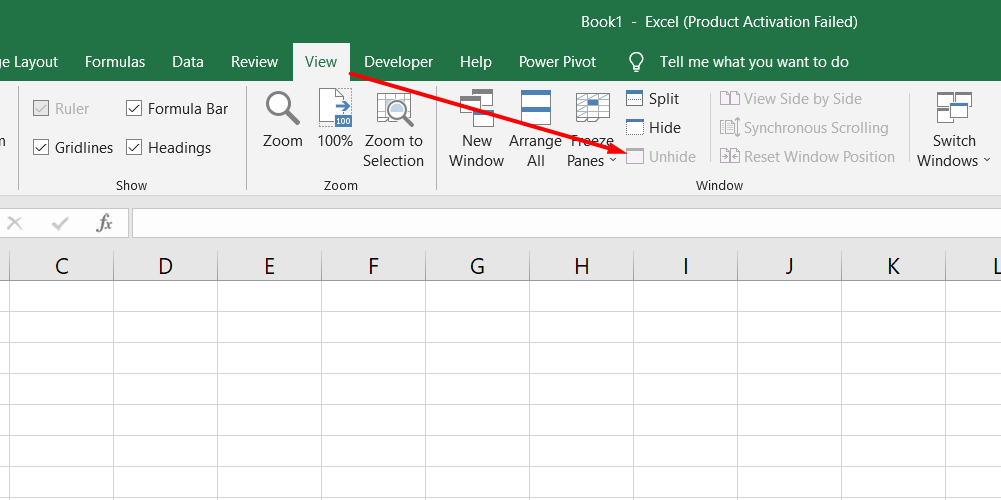
- A dialog box will appear showing a list of hidden sheets or workbooks.
- Select the sheet or workbook you want to display.
- Click “OK” to unhide it.
Once you complete these steps, your hidden content should now be visible.
💡 Pro Tip: Always check for hidden sheets first when Excel opens to a blank file. It’s a common scenario, especially in files that have been modified by multiple users or saved in certain versions of Excel.
This simple solution is a great first step in troubleshooting Excel files that appear empty—restoring access to your data without any advanced fixes.
Option 2: Minimize and Maximize the Excel Window
If Excel opens but displays a blank screen or your spreadsheet doesn’t appear on the desktop, a simple minimize and maximize trick can help refresh the interface and reveal hidden content. This method can resolve display glitches, especially when Excel opens off-screen or becomes unresponsive.
🔧 How to Refresh Excel by Minimizing and Maximizing the Window
Try these quick steps:
- Minimize the Excel window by clicking the “–” (Minimize) button at the top-right corner of the application.

- Go to your taskbar (usually located at the bottom of your screen).
- Right-click the Excel icon in the taskbar.
- From the menu that appears, select the spreadsheet or workbook you’re trying to access.
- Once selected, click to maximize the window, or double-click the Excel icon directly.
After maximizing, your spreadsheet should become visible and return to its normal state.
💡 Why this works: Sometimes, Excel opens in the background, off-screen, or in a minimized state due to display bugs—especially when switching between monitors or after remote desktop sessions.
This easy fix is worth trying early in your troubleshooting process before diving into more complex solutions.
Option 3: Disable Hardware Graphics Acceleration in Excel
If Excel is opening but not displaying content properly, or if you’re facing a blank screen, the issue might stem from your system’s graphics hardware compatibility. Disabling hardware graphics acceleration is a proven workaround that can resolve Excel display problems—especially those related to outdated or incompatible video drivers.
🛠️ How to Disable Hardware Acceleration in Excel
Follow these steps to turn off hardware graphics acceleration:
- Open any Office application (Excel, Word, Outlook, etc.).
- Click the “File” tab in the top-left corner.
- Select “Options” from the dropdown menu.
- In the Options dialog box, go to the “Advanced” section.
- Scroll down until you find the “Display” settings.
- Check the box for “Disable hardware graphics acceleration.”
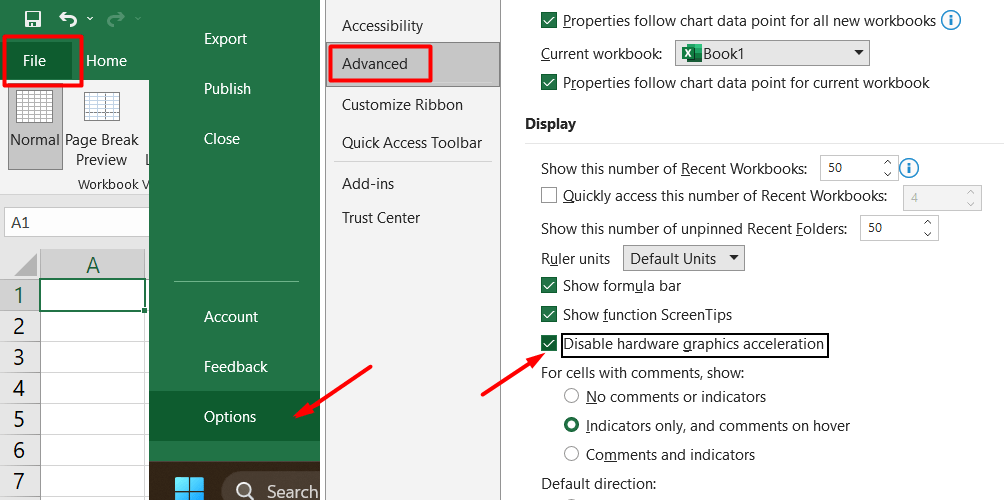
7. Click “OK” to apply the changes.
💡 Why this helps: Hardware acceleration offloads graphics processing to your GPU (graphics card), but on some systems—especially older ones or those with outdated drivers—this can cause Excel to malfunction or display blank pages. Disabling this feature forces Excel to rely on software rendering, which is more stable in such scenarios.
While this is a temporary fix, it’s a reliable way to restore Excel functionality until your video adapter manufacturer releases an updated driver.
Option 4: Uncheck “Ignore DDE” to Fix Excel Not Opening
If Excel isn’t opening properly when you double-click a file, the issue might be caused by the “Ignore other applications that use Dynamic Data Exchange (DDE)” setting. When this option is enabled, Excel won’t respond to DDE commands, which are essential for opening files directly from File Explorer or other applications.
This simple setting change can quickly resolve the issue and restore Excel’s expected behavior.
🔧 How to Disable the “Ignore DDE” Setting in Excel
- Launch Excel on your computer.
- Click the “File” tab in the top-left corner.
- From the menu, select “Options.”
- In the Excel Options window, navigate to the “Advanced” section.
- Scroll down to the “General” settings.
- Find the checkbox labeled “Ignore other applications that use Dynamic Data Exchange (DDE)”.
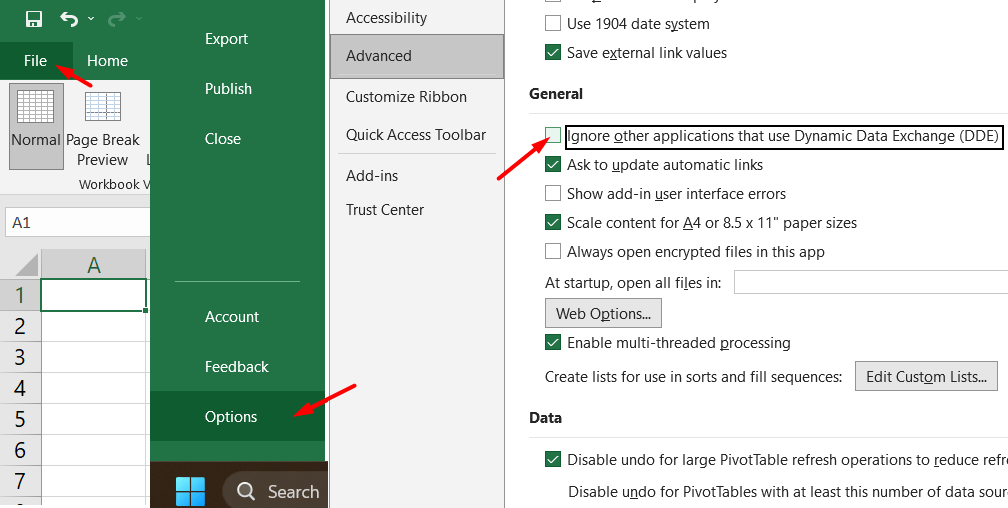
7. Uncheck this box to disable the setting.
8. Click “OK” to save and exit.
💡 Tip: This setting often causes issues when trying to open Excel files by double-clicking them in File Explorer. Disabling it ensures that Excel communicates correctly with the Windows shell and other integrated apps.
Once you’ve made this change, try opening your Excel file again—it should now launch without any problems.
Option 5: Reset Excel File Associations to Default
If Excel files aren’t opening correctly—or opening with the wrong application—it could be due to misconfigured file associations on your Windows system. File associations determine which program opens specific file types, such as .xlsx or .xls, and resetting these settings can resolve issues where Excel won’t launch or display content properly.
Follow the steps below based on your Windows version to restore Excel file associations to their default settings.
🔄 For Windows 10 & Windows 8.1
- Locate the problematic Excel file on your desktop or in File Explorer.
- Right-click the file and choose “Properties.”
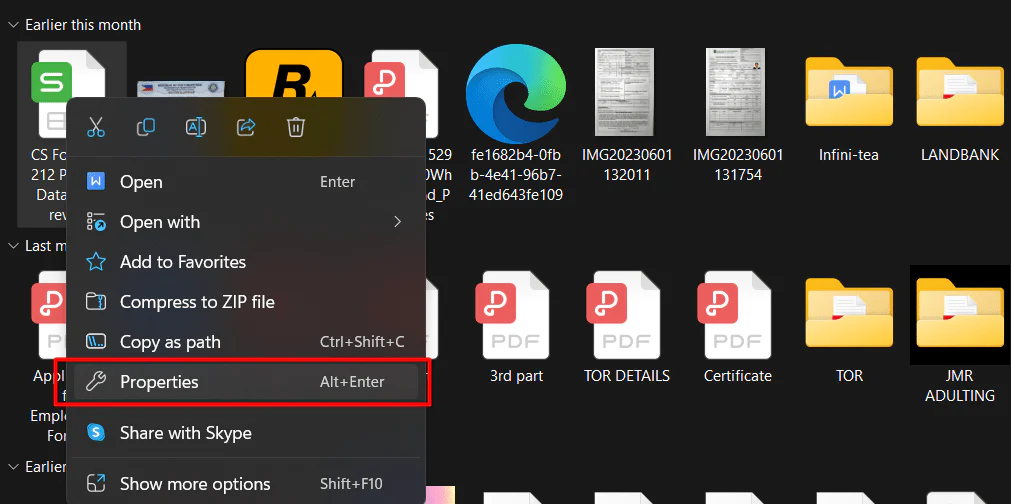
- In the General tab, check the “Type of file” section to see the file extension (e.g.,
.xlsx). - Look at the “Opens with” section and click “Change.”
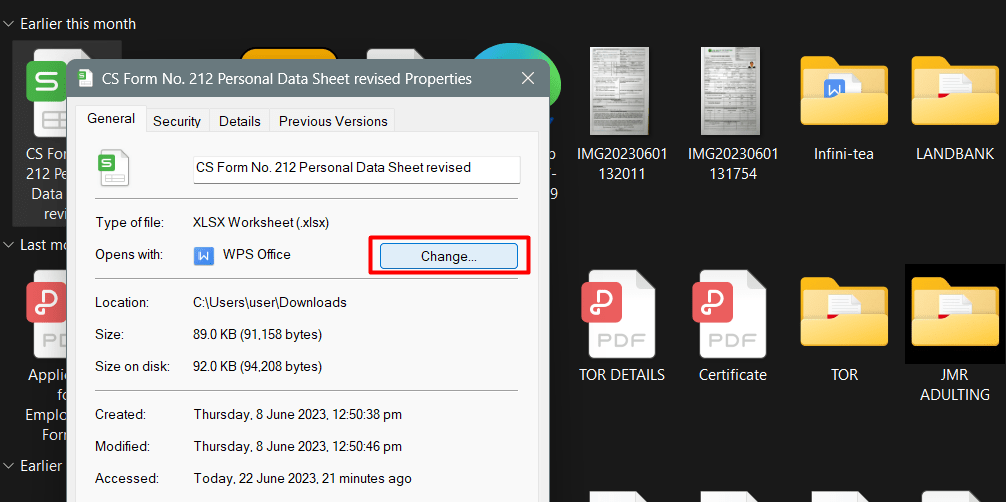
- Select “More apps,” then choose Microsoft Excel.
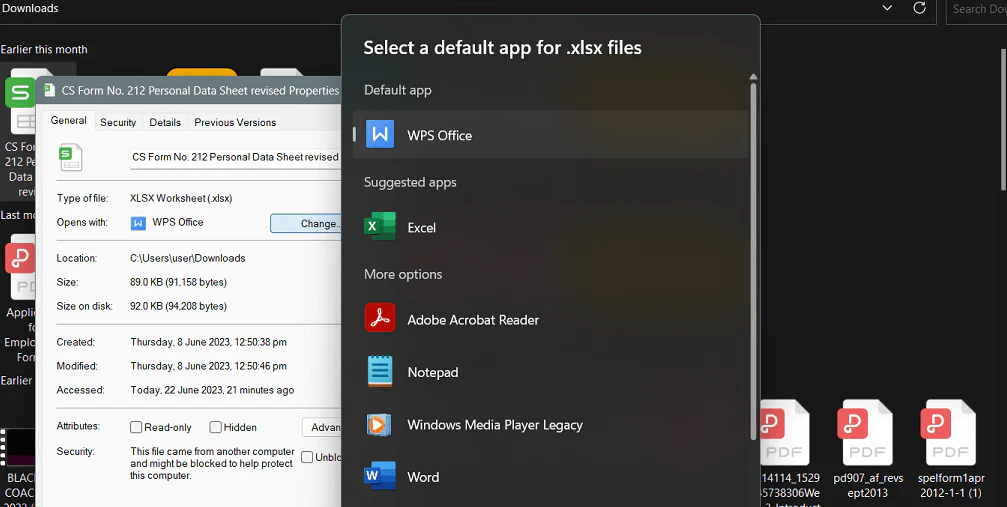
- Check the box for “Always use this app to open .xlsx files.”
- Click “OK” to confirm and apply the change.
🛠️ For Windows 8
- Open the Start Menu and type “Control Panel.”
- Select “Default Programs” > “Set your default programs.”

- Choose Microsoft Excel from the list.
- Click “Choose defaults for this program.”
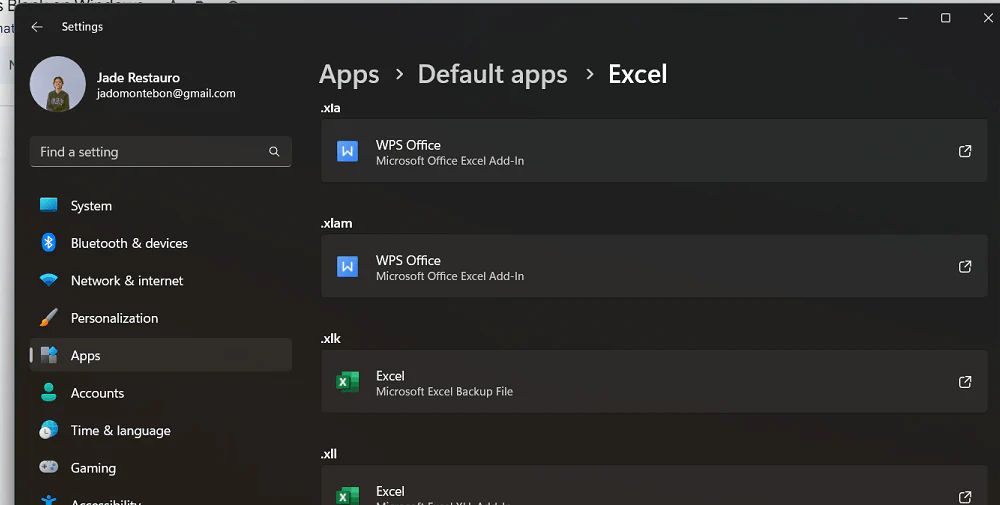
- On the next screen, click “Select All,” then click “Save.”
⚙️ For Windows 7
- Click the Start button and open the Control Panel.
- Navigate to “Default Programs” > “Associate a file type or protocol with a specific program.”
- Locate the entry for “.xlsx” (Microsoft Excel Worksheet) and click “Change program.”
- Choose Microsoft Excel from the list. If it’s not listed, click “Browse” and locate Excel.exe in your Office installation folder.
- Confirm and apply the changes.
💡 Why this matters: If Excel files open in the wrong program (like Notepad or Word), resetting file associations ensures your spreadsheets always open in Excel, preserving full functionality and avoiding formatting issues.
Once you’ve reset the file associations, try opening the file again. Excel should now launch correctly and display your data as expected.
One more thing
If you’re in search of a software company that embodies integrity and upholds honest business practices, your quest ends here at Ecomkeys.com. As a Microsoft Certified Partner, we prioritize the trust and satisfaction of our customers. Our commitment to delivering reliable software products is unwavering, and our dedication to your experience extends far beyond the point of sale. At Ecomkeys.com, we provide a comprehensive 360-degree support system that accompanies you throughout your software journey. Your trust is our foundation, and we’re here to ensure that every interaction with us is a positive and trustworthy one.

